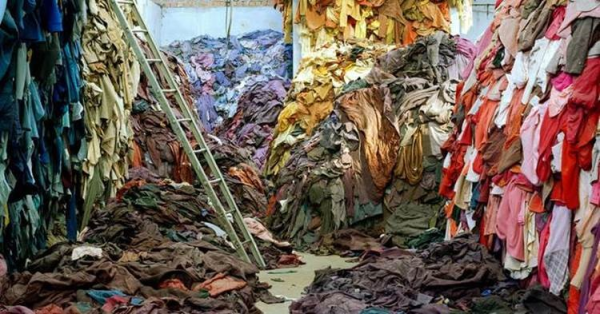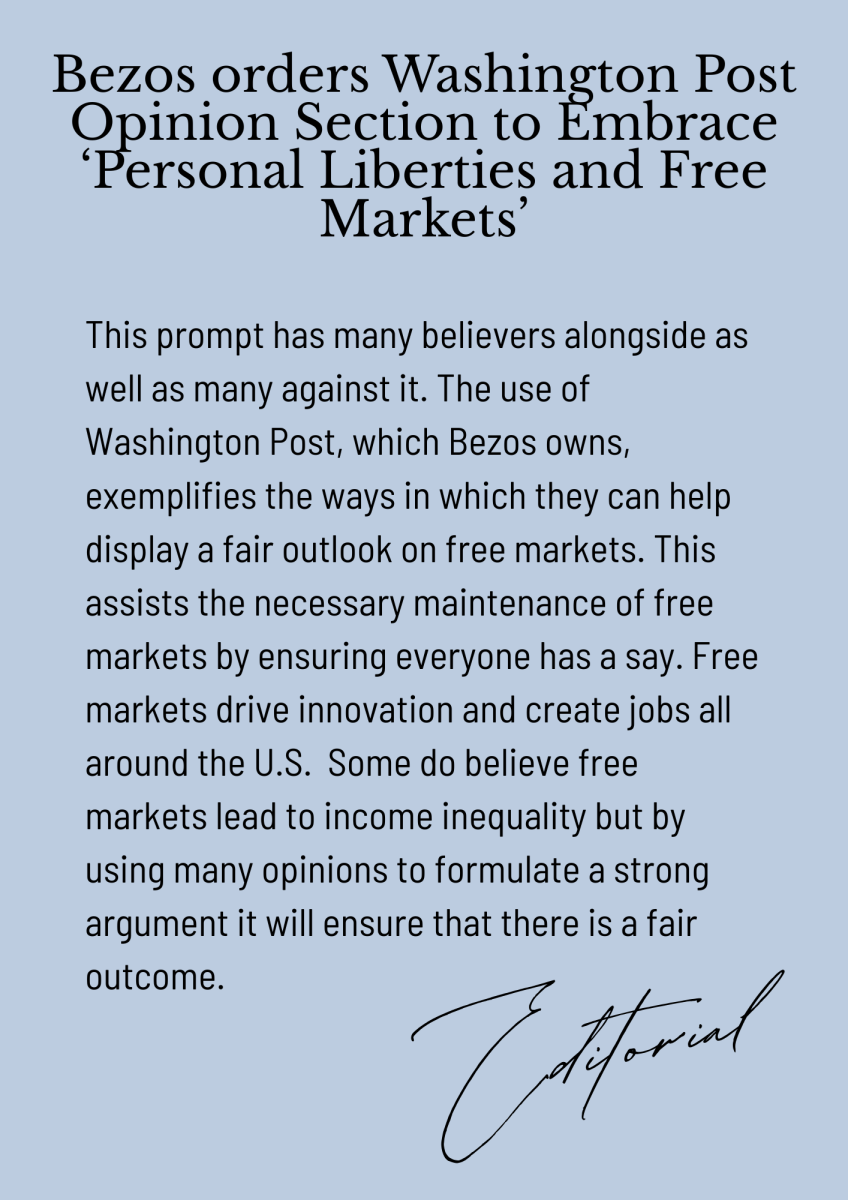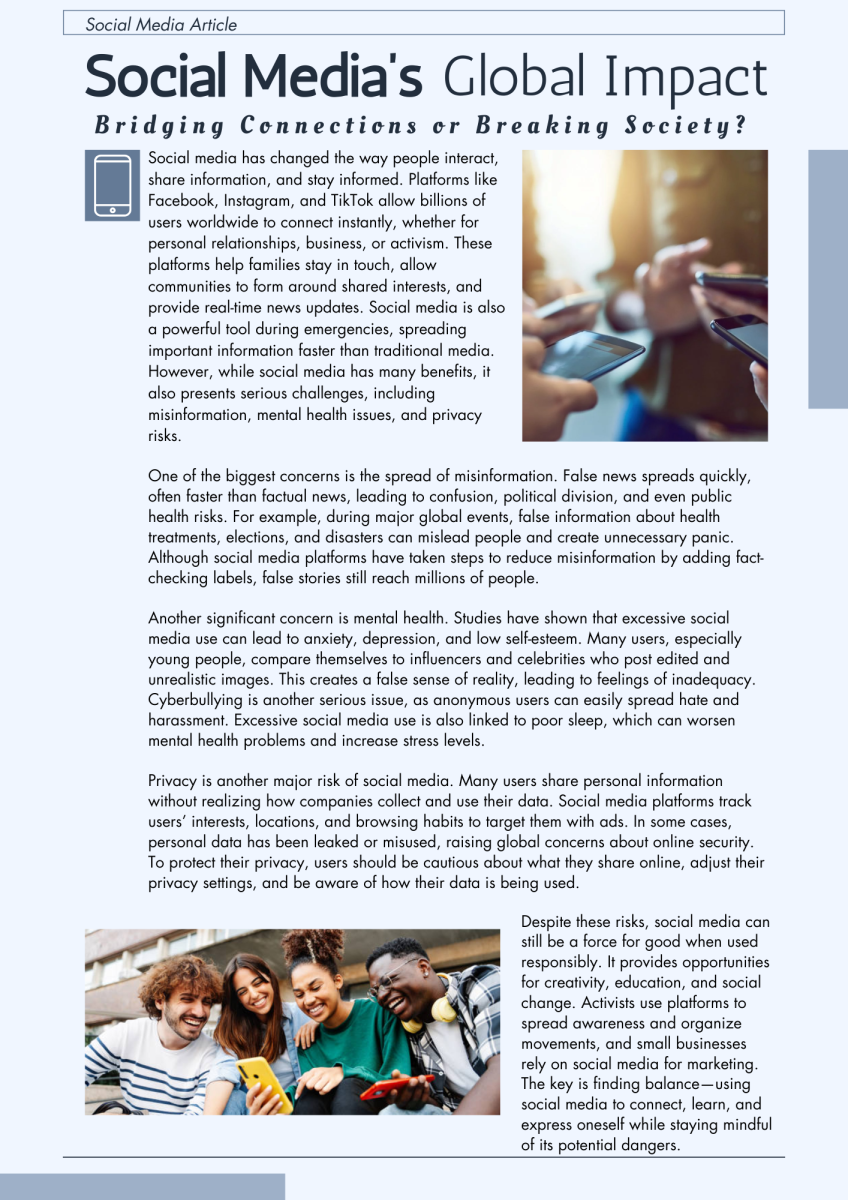The Real Impact of Fast Fashion
With a growing influence of social media trends on everyday fashion, the appeal of the quick and affordable access given by fast fashion brands has skyrocketed for consumers. Fast fashion is defined as “inexpensive clothing produced

rapidly by mass-market retailers in response to the latest trends.” Brands like SHEIN, FashionNova, H&M, Primark, and countless more are enabling fashion trends to come and go within months as they continue to enable rapid purchasing and discarding of clothing. The impact of this overconsumption on our environment is growing at an alarming rate. As of 2024, the fast fashion industry was responsible for 10% of the annual global carbon footprint. On top of that, 141 billion cubic meters of water are used annually by the fast fashion industry, and it contributes to 35% of microplastics polluting the ocean. The industry wasn’t always this large and harmful. Over the past couple of years, it has grown to be a global problem, but how did we get to this point?
Social Media’s Influence on Fast Fashion
“Influencers” (social media stars) have certainly earned their titles in terms of their influential impact, especially on younger generations. Apps like TikTok and Instagram provide a platform for anyone to reach an audience of millions. Oftentimes, the most popular influencers that we see are members of the younger generations themselves. “Gen Z” has taken TikTok by storm, and along with the generation has come countless swarms of new fashion trends. Influencers promote fast fashion brands without even realizing the impact of what they’re doing. Posting a “SHEIN haul”
 That is then viewed by a million people, most of whom are going to see a piece of clothing they like and then purchase it for under $5 on SHEIN, which fuels the fast fashion industry tremendously. Now think of how many influencers are out there posting videos like this, for multiple brands, multiple times, being viewed by countless people. Think about your own TikTok “for you page.” How many scrolls will it take until you come across a video of this nature? How many scrolls until the next one? As a younger generation, today’s teenagers need to take a stance against fast fashion before it’s too late. If the industry continues to prosper at this rate, the environmental impact will be irreversible in just a few short years. At the moment, Gen Z is the biggest contributor to fast fashion brands. A study conducted across the United States shows that, on average, members of Gen Z will spend $767 a year on fast fashion, per person. 79% of people surveyed said they shop at fast fashion brands at least once a month. On a large scale (such as a survey conducted across the entire country), these numbers may not seem so big and harmful, but nearly the same statistics hold for our very own community. Out of 16 Hauppauge High School students who were asked the question, “Have you ever shopped at any of the stores/brands mentioned below?,” only 3 responded with “No.” That means that 81.3% of people have shopped fast fashion, which is an even higher number than the national statistic. The list of brands included in the survey was as follows: SHEIN, FashionNova, Primark, Zara, Forever 21, and H&M. Some of these brands may come as a shock, with most people not realizing they are some of the biggest contributors to the fast fashion industry. SHEIN is the #1 contributor, owning 50% of the US Market Share. Then comes H&M with 16%, Zara with 13%, FashionNova with 11%, and Forever 21 with 6%. Fast fashion isn’t jus
That is then viewed by a million people, most of whom are going to see a piece of clothing they like and then purchase it for under $5 on SHEIN, which fuels the fast fashion industry tremendously. Now think of how many influencers are out there posting videos like this, for multiple brands, multiple times, being viewed by countless people. Think about your own TikTok “for you page.” How many scrolls will it take until you come across a video of this nature? How many scrolls until the next one? As a younger generation, today’s teenagers need to take a stance against fast fashion before it’s too late. If the industry continues to prosper at this rate, the environmental impact will be irreversible in just a few short years. At the moment, Gen Z is the biggest contributor to fast fashion brands. A study conducted across the United States shows that, on average, members of Gen Z will spend $767 a year on fast fashion, per person. 79% of people surveyed said they shop at fast fashion brands at least once a month. On a large scale (such as a survey conducted across the entire country), these numbers may not seem so big and harmful, but nearly the same statistics hold for our very own community. Out of 16 Hauppauge High School students who were asked the question, “Have you ever shopped at any of the stores/brands mentioned below?,” only 3 responded with “No.” That means that 81.3% of people have shopped fast fashion, which is an even higher number than the national statistic. The list of brands included in the survey was as follows: SHEIN, FashionNova, Primark, Zara, Forever 21, and H&M. Some of these brands may come as a shock, with most people not realizing they are some of the biggest contributors to the fast fashion industry. SHEIN is the #1 contributor, owning 50% of the US Market Share. Then comes H&M with 16%, Zara with 13%, FashionNova with 11%, and Forever 21 with 6%. Fast fashion isn’t jus
t from online websites, as proven with these statistics. Stores like H&M have many in-person locations, giving the illusion that they are not fast fashion brands. This only adds to the problem, as people looking for “sustainable fashion” could easily be tricked.
How do we fix this problem?
Without proper education on the topic, change will never come. If there is not a serious change in the consumption patterns of fast fashion soon, the effects on the environment will be too severe to fix. So, how do we make the change? For starters, the purchasing of fast fashion clothing needs to stop. If we continue to support and fund fast fashion brands, they will continue to thrive. As for the brands that have physical locations, defunding them by stopping the purchase of items will force them to close their locations. Secondly, it is extremely important to research the true impacts of fast fashion. Oftentimes, seeing the damage with your own eyes can be the push you need to
help make a change. The internet is a wide place, and there are plenty of websites that offer information on how fast fashion hurts our environment. Earth.org, UNEP.org, and carbontrail.net are all great examples and places to start. Lastly, be the change you want to see. It’s so easy to think, “I’m just one person, will I not supporting fast fashion even make a difference?” But the answer is: yes, it will. If everyone has the mindset that they don’t need to stop because it won’t make a difference, then no one will stop. It takes one person to start a movement. Why shouldn’t it be you?








